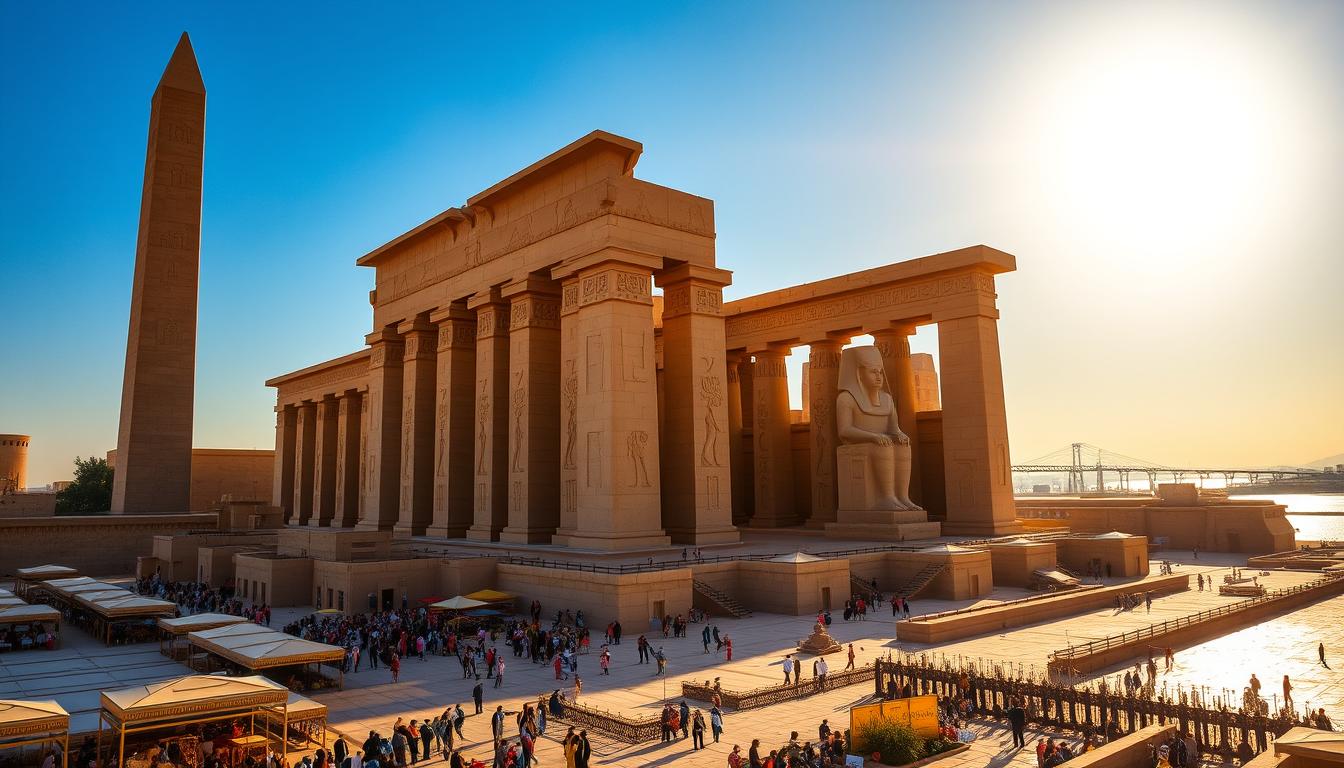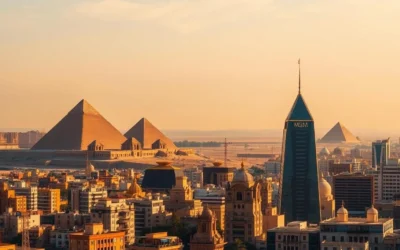✓ Accommodations ✓ Flights ✓ Rental Cars ✓ Tours & Activities
Have you ever wondered what makes a city stand the test of time? Imagine a place where history whispers through ancient ruins and modern life thrives along the banks of the Nile. This is the essence of Memphis, a city that once served as the first capital of ancient Egypt and continues to captivate travelers today.
Known as Men-nefer, meaning “Lasting and Beautiful,” this city has a legacy that spans over 4,000 years. From its grand monuments to its archaeological treasures, Memphis offers a unique blend of history and adventure. Whether you’re exploring its impressive ruins or learning about its role in shaping ancient Egypt, there’s something here for everyone.
As you plan your travel, you’ll discover why this city remains a must-visit destination. Its rich heritage and strategic location near the Nile make it a gateway to understanding the great civilizations of the past. Let’s dive into what makes Memphis a timeless treasure in the world of travel.
Key Takeaways
- Memphis was the first capital of ancient Egypt, with a history spanning over 4,000 years.
- The city’s original name, Men-nefer, means “Lasting and Beautiful.”
- Located near the Nile, it offers a unique blend of history and modern travel experiences.
- Memphis is home to grand monuments and archaeological sites that attract visitors worldwide.
- Its legacy continues to inspire travelers, making it a must-visit destination.
Introduction to Memphis (Men-nefer), Egypt
Discover a place where the past and present intertwine, offering a glimpse into a timeless legacy. This city, once known as Men-nefer, meaning “Enduring and Beautiful,” has a story that spans thousands of years. Founded as Inbu-Hedj, it later became the first capital of ancient Egypt, shaping the course of history.
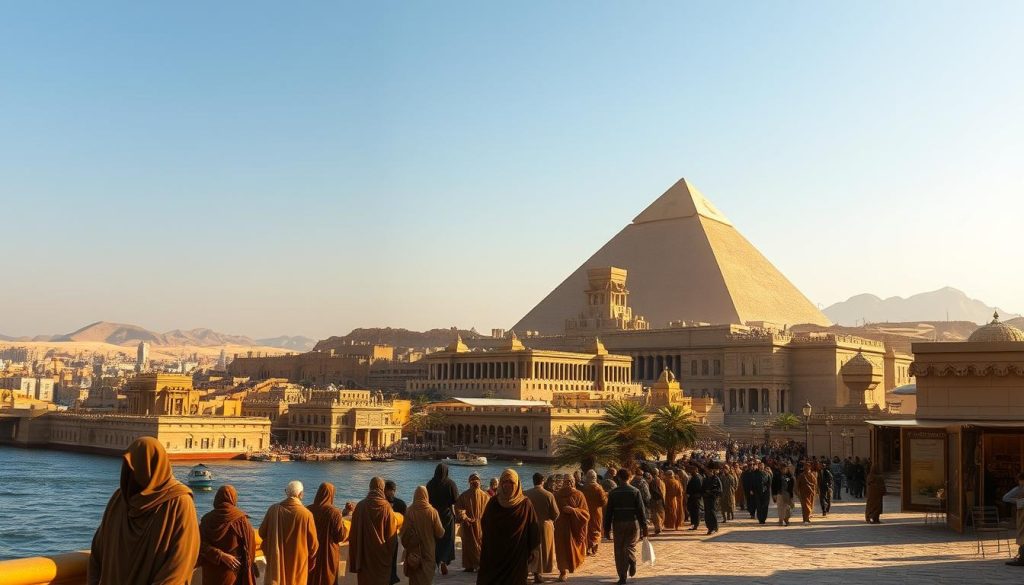
During the Old Kingdom, this city flourished under the rule of Pharaoh Menes. Its strategic location near the Nile made it a hub of culture, trade, and power. Over time, it became a center for religious and political life, leaving behind a wealth of archaeological treasures.
Unearthing Its Historical Background
The city’s origins date back to the Archaic Period, around 3100 B.C. As the first capital, it played a pivotal role in unifying Upper and Lower Egypt. Its name, Men-nefer, reflects its enduring beauty and significance.
Archaeological discoveries reveal the grandeur of its past. Remains of temples, statues, and pyramids highlight its historical relevance. These sites offer a window into the lives of the ancient Egyptians and their remarkable achievements.
Cultural Legacy and Modern Connections
Today, the city’s legacy lives on through its ruins and museums. A visit here connects you to the rituals and traditions of the past. A knowledgeable guide can enhance your experience, providing detailed information about its rich heritage.
Modern interpretations of its history continue to captivate visitors. From its ancient temples to its open-air museums, this city offers a unique blend of history and culture. It’s a destination that bridges the gap between the past and the present.
Memphis (Men-nefer), Egypt: Best Things to Do – Top Picks
Step into a world where history comes alive through breathtaking monuments and ancient wonders. This city offers a treasure trove of attractions that let you experience the grandeur of the past firsthand. From towering pyramids to intricate statues, every corner tells a story of a civilization that shaped the world.
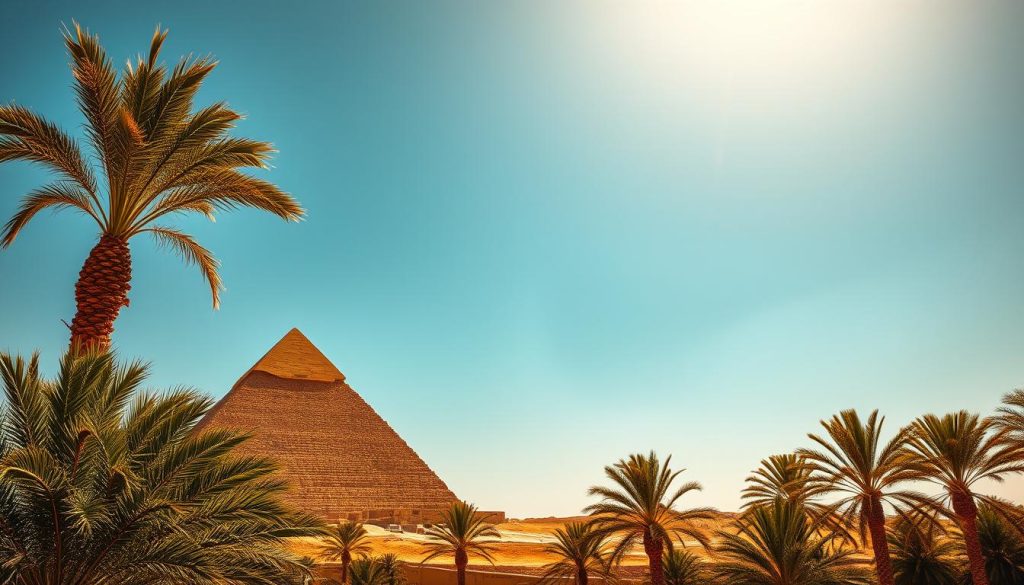
Top Attractions You Must Experience
Your journey here wouldn’t be complete without exploring its iconic landmarks. Start with the majestic pyramids, symbols of the city’s architectural brilliance. These structures, built by skilled craftsmen, stand as a testament to the ingenuity of the ancient world.
Next, visit the grand temples that once served as centers of worship and power. Each temple is adorned with intricate carvings and hieroglyphs, offering a glimpse into the lives of the pharaohs who ruled here. Don’t miss the chance to see the well-preserved statues, which capture the essence of the era in stunning detail.
For a deeper dive into history, head to the Saqqara necropolis. This sprawling area is home to some of the oldest pyramids and tombs, providing a fascinating look at burial practices and beliefs. A guided tour can enhance your experience, offering insights into the significance of each site.
Practical Tips for Your Visit
To make the most of your day, plan your visit during the cooler months of spring or winter. Early mornings are ideal for avoiding crowds and enjoying the sites at your own pace. Wear comfortable shoes, as you’ll be walking through expansive ruins and open-air museums.
| Attraction | Highlights | Best Time to Visit |
|---|---|---|
| Pyramids | Architectural marvels, historical significance | Early morning |
| Temples | Intricate carvings, religious history | Midday |
| Saqqara Necropolis | Ancient tombs, burial practices | Late afternoon |
Whether you’re marveling at the pyramids or exploring the temples, this city promises an unforgettable adventure. Every step you take here connects you to a legacy that continues to inspire awe and wonder.
Exploring Ancient Sites and Ruins
Uncover the secrets of a civilization that shaped the world through its monumental achievements. The remnants of this ancient city offer a fascinating journey into the past, where every stone tells a story of innovation and grandeur.
Highlights at the Open-Air Museum and Alabaster Sphinx
Start your exploration at the open-air museum, where relics from the past are displayed under the vast sky. Here, you’ll find the famous alabaster sphinx, a masterpiece of ancient craftsmanship. Carved from a single block of stone, this sphinx stands as a testament to the skill of its creators.
The museum also houses statues, temple fragments, and other artifacts that provide a glimpse into daily life thousands of years ago. Each piece is a window into the culture and beliefs of the people who once thrived here.
Discovering Temples, Statues, and Pyramid Remnants
Venture further to explore the ruins of temples and statues that once stood as symbols of power and devotion. The smooth sides of the pyramid remnants showcase the precision of ancient architects. These structures were not just feats of engineering but also held deep religious significance.
One of the most intriguing sites is the ruin of a temple adorned with intricate hieroglyphics. These carvings tell stories of gods, pharaohs, and the rituals that defined this civilization. Nearby, the remains of smaller pyramids and tombs offer insights into burial practices and the afterlife beliefs of the time.
| Site | Feature | Significance |
|---|---|---|
| Open-Air Museum | Alabaster Sphinx | Showcases ancient craftsmanship |
| Temple Ruins | Hieroglyphics | Depicts religious and historical narratives |
| Pyramid Remnants | Smooth Sides | Reflects advanced engineering skills |
To make the most of your visit, consider joining a guided tour. Knowledgeable guides can provide deeper insights into the history and significance of each site. Wear comfortable shoes and bring water, as exploring these expansive ruins can be both rewarding and tiring.
Whether you’re marveling at the alabaster sphinx or tracing the lines of ancient hieroglyphics, these ruins connect you to a legacy that continues to inspire awe and wonder.
Day Trips and Tours from Cairo
Planning a day trip from Cairo? Get ready to explore some of the most iconic historic sites just a short drive away. These destinations offer a fascinating journey into the past, where ancient wonders and architectural marvels await. Whether you’re a history enthusiast or a casual traveler, these tours promise an unforgettable adventure.
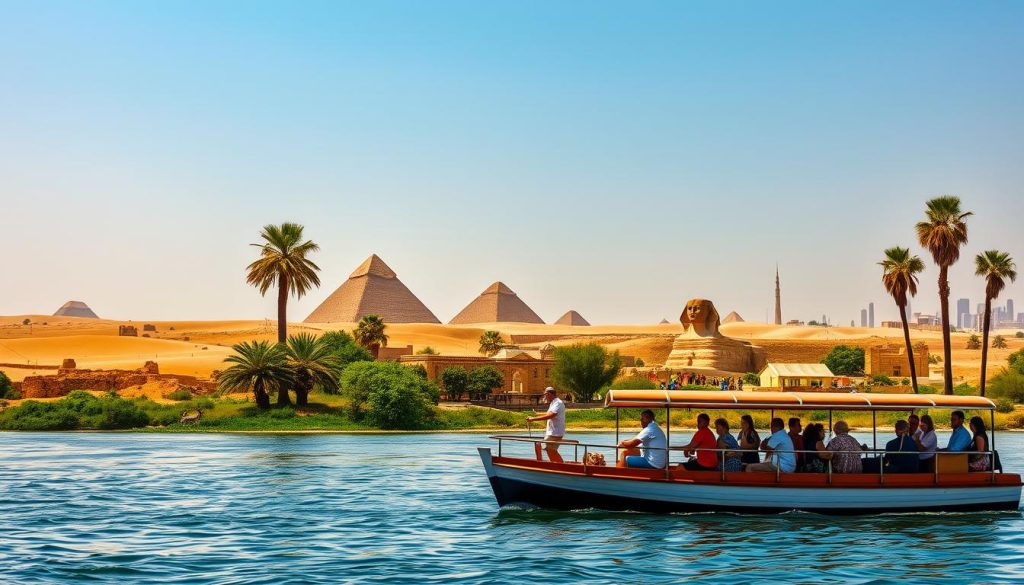
Visiting Dahshur, Saqqara, and Other Historic Sites
Start your journey with a visit to Dahshur, home to some of the most unique pyramids in the region. The Bent Pyramid and the Red Pyramid are must-see attractions. These structures showcase the evolution of pyramid construction and offer a quieter alternative to the bustling Giza Plateau.
Next, head to Saqqara, where the Step Pyramid of Djoser stands as the oldest stone structure in the world. This site is a testament to the ingenuity of ancient architects and provides a deeper understanding of burial practices during the Old Kingdom.
Finally, explore the ancient city of Memphis, the first capital of ancient Egypt. Its open-air museum features the famous alabaster sphinx and other relics that highlight the city’s historical significance.
Sample Itinerary for a Day Trip
Here’s a practical itinerary to help you make the most of your day:
- Morning: Depart from Cairo and head to Dahshur (approx. 40 km south). Explore the Bent and Red Pyramids.
- Midday: Travel to Saqqara (approx. 30 km). Visit the Step Pyramid and nearby tombs.
- Afternoon: Conclude your trip in Memphis. Spend time at the open-air museum before returning to Cairo.
Transportation and Tour Options
Getting to these sites is easy with guided tours or private taxis. Most tours include transportation, a knowledgeable guide, and entrance fees. The average duration for a full-day tour is around 8 hours, making it a convenient option for travelers.
| Site | Highlights | Travel Time from Cairo |
|---|---|---|
| Dahshur | Bent Pyramid, Red Pyramid | 1 hour |
| Saqqara | Step Pyramid of Djoser | 1.5 hours |
| Memphis | Open-air museum, Alabaster Sphinx | 2 hours |
To maximize your experience, start early to avoid crowds and the midday heat. Wear comfortable shoes and bring water, as you’ll be walking through expansive ruins. A guided tour can provide valuable insights into the history and significance of each site.
These day trips from Cairo offer a perfect blend of history, culture, and adventure. Whether you’re marveling at the pyramids or exploring ancient temples, each stop connects you to a legacy that continues to inspire awe and wonder.
Local Attractions and Modern Egyptian Experiences
Experience a city where ancient wonders blend seamlessly with modern innovations. This destination offers a unique mix of historical landmarks and contemporary attractions, creating a vibrant cultural scene that appeals to all travelers. From reimagined pyramids to dynamic urban developments, every corner tells a story of a civilization that continues to inspire.
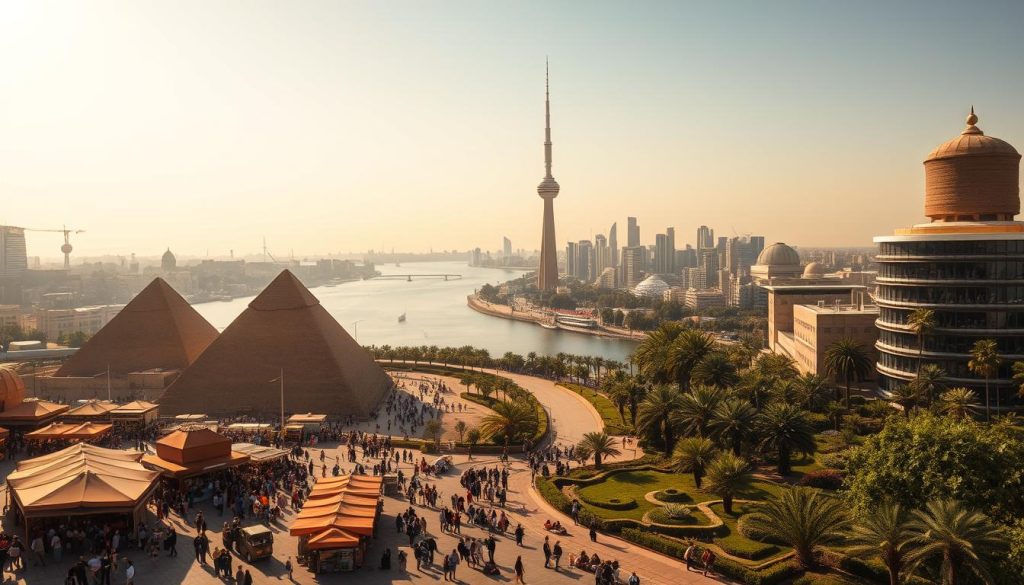
The Transformative Pyramid and Contemporary Landmarks
One of the most fascinating aspects of this city is how ancient structures like pyramids have been transformed into modern landmarks. These iconic symbols of the past now serve as shopping centers, entertainment hubs, and cultural spaces. This blend of old and new creates a unique experience where history meets innovation.
For example, the pyramid at the heart of the city has been reimagined as a bustling marketplace. Here, you can shop for traditional crafts while marveling at the architectural brilliance of the ancient world. Nearby, another pyramid houses a state-of-the-art museum, showcasing exhibits related to Ptah, the ancient god of creation.
Cultural Vibrancy and Urban Developments
The city’s cultural scene is equally dynamic. Modern museums and galleries feature exhibits that highlight its rich heritage, while contemporary art installations draw inspiration from ancient themes. This fusion of past and present creates a vibrant atmosphere that invites exploration.
Proximity to other major destinations like Luxor adds depth to your travel experience. A short trip allows you to explore more of the region’s historical treasures, making this city a perfect base for your adventures.
| Ancient Attraction | Modern Transformation | Experience |
|---|---|---|
| Pyramid | Shopping Center | Shop and explore history |
| Temple Ruins | Cultural Space | Attend events and exhibitions |
| Statues | Art Installations | Admire modern interpretations |
Whether you’re marveling at ancient ruins or enjoying modern amenities, this city offers a journey through time. Its ability to preserve its heritage while embracing innovation makes it a must-visit destination for travelers seeking a unique blend of history and modernity.
Travel Tips and Essential Information
Planning your trip to this historic destination? Here’s everything you need to know to make your visit smooth and memorable. From the best time to explore to navigating the area, these tips will help you maximize your experience.
Best Time to Visit and Navigation Tips
The ideal time to visit is during the cooler months, from October to April. Temperatures are milder, making it easier to explore outdoor sites like Dahshur and the surrounding area. Early mornings are perfect for avoiding crowds and enjoying the serene beauty of the ruins.
When navigating, consider hiring a knowledgeable guide. They can provide valuable insights into the history and significance of each site. Maps and GPS apps are also helpful for finding your way around.
Guidance on Tours, Transportation, and Local Etiquette
Guided tours are a great way to explore the region. They often include transportation, entrance fees, and detailed information about the sites. If you prefer flexibility, private taxis are widely available and can take you to key locations like Dahshur and the open-air museum.
When interacting with locals, a friendly attitude goes a long way. Tipping is customary for guides and drivers, so keep small bills handy. Dress modestly, especially when visiting religious sites, to show respect for local customs.
- Best Time to Visit: October to April for cooler weather.
- Navigation Tips: Use maps, GPS, or hire a guide.
- Tour Options: Guided tours or private taxis for flexibility.
- Local Etiquette: Dress modestly and tip guides and drivers.
| Transportation Option | Pros | Cons |
|---|---|---|
| Guided Tours | Includes transportation and insights | Less flexibility in schedule |
| Private Taxis | Flexible and convenient | May require negotiation |
With these tips, you’re ready to plan a seamless and enriching travel experience. Whether you’re marveling at ancient ruins or exploring the vibrant culture, this destination promises unforgettable memories.
Conclusion
From towering pyramids to intricate statues, this destination offers a journey through time. As the capital of an ancient kingdom, it holds a legacy that continues to inspire awe. Explore the grandeur of its temples, the mystery of its tombs, and the artistry of its statues and sphinxes.
Whether you’re marveling at the alabaster sphinx or wandering through open-air museums, every step connects you to a rich history. The city’s transformation from an ancient hub to a modern treasure makes it a must-visit for travelers seeking a blend of past and present.
Plan your trip during cooler months for a comfortable experience. Hire a knowledgeable guide to uncover hidden stories behind the ruins. From the temples of Luxor to the pyramids of Dahshur, this region promises unforgettable memories.
Discover a world where history is alive, and every corner tells a story. Start planning your adventure today and witness the enduring beauty of this timeless destination.
The above is subject to change.
Check back often to TRAVEL.COM for the latest travel tips and deals.
Here are some Tours & Sightseeing suggestions that might pique your interests!
